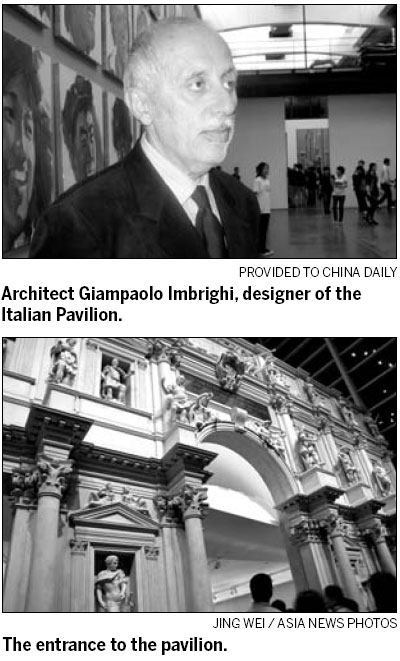Of streets and squares
By Gan Tian (Agencies)
Updated: 2010-05-15 09:21
 |
Large Medium Small |

The Italian Pavilion of the Shanghai Expo is inspired by the relationship between humans and cities, says its chief architect Giampaolo Imbrighi.
The Marco Polo sculpture at the entrance, besides the D&G, Prada and Versace fashion shows, and the hi-tech transparent concrete panels, are all elements of this relationship, he explains. He made these remarks in Beijing recently, while delivering a lecture at the Ullens Center for Contemporary Arts.
Imbrighi and his team won the bid to build the Italian Pavilion three years ago. The pavilion, known as City of Man, occupies about 6,000 square meters, and is composed of 20 functional modules, representing the country's 20 regions. The separate modules create a large empty space in the middle, and many small paths inside the building. According to the architect, this design is aimed at reminding people about "streets and squares".
Imbrighi pointed out that since ancient times, streets and squares have been places where culture thrives, as they provide a communal space for people to know each other, and to interact with their environment. He believes that they are among the most important elements of a city.
"I wanted to remind people of the way of life in the Renaissance and the Middle Ages. Streets and squares were where true happiness was born. While nowadays, people are more separated in metropolises," Imbrighi said.
He visited many Chinese cities during the construction, trying to discover the residents' relationship with their community. Surprisingly, he found similarities between some second- and third-tier cities in China and Italy, in aspects like water and air circulation systems and architecture.
Changchun, Jilin province, impressed the Italian architect the most. "It is a car-making city, with similar characteristics to Torino. The two cities are both traditional and modern in a harmonious way," Imbrighi said.
Shanghai's traditional shikumen residential area also impressed Imbrighi. Comprising two or free floors with black or grey bricks, each building is connected with others through alleys, and every alley's entrance is a stone arch, which then leads to an open area.
Imbrighi was also keen to emphasize eco-friendly architecture using natural water and air circulation systems.
The Italian Pavilion was made using hi-tech transparent concrete panels. "It can let in as much daylight as possible, saving a lot of energy. At the same time, the indoor lights can be seen from the outside at night, making it a beautiful architecture," he said.
Ambassador of Italy Riccardo Sessa, who also appeared at the seminar, said many Chinese cities have expressed the wish that the Italian Pavilion be rebuilt in their cities after the Expo.